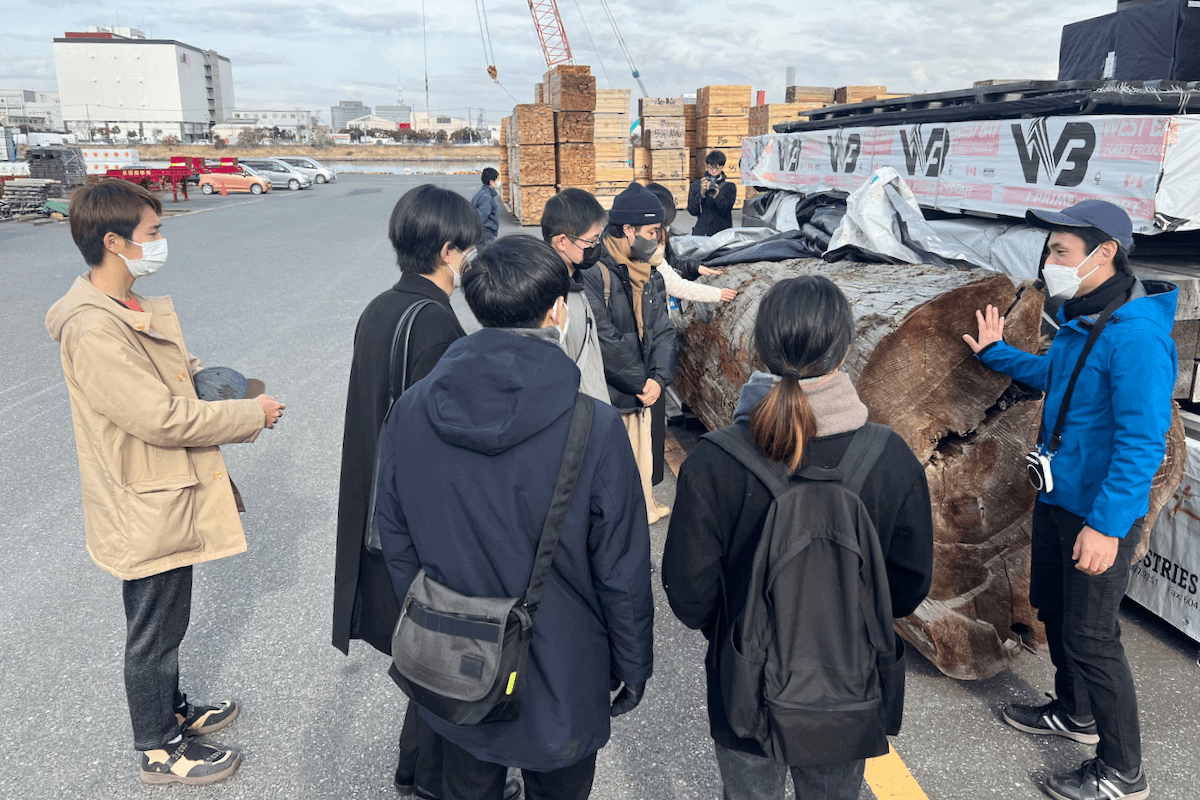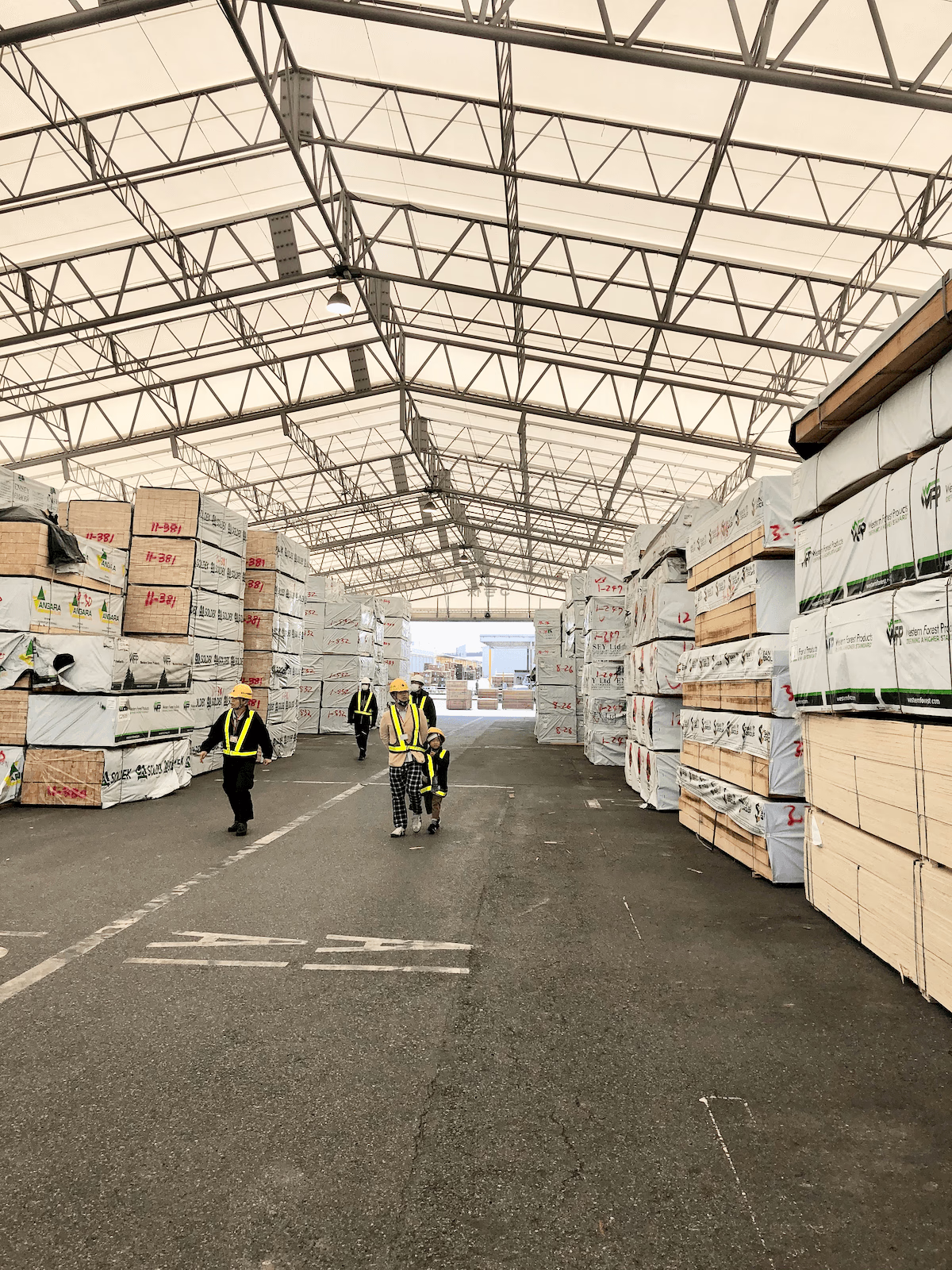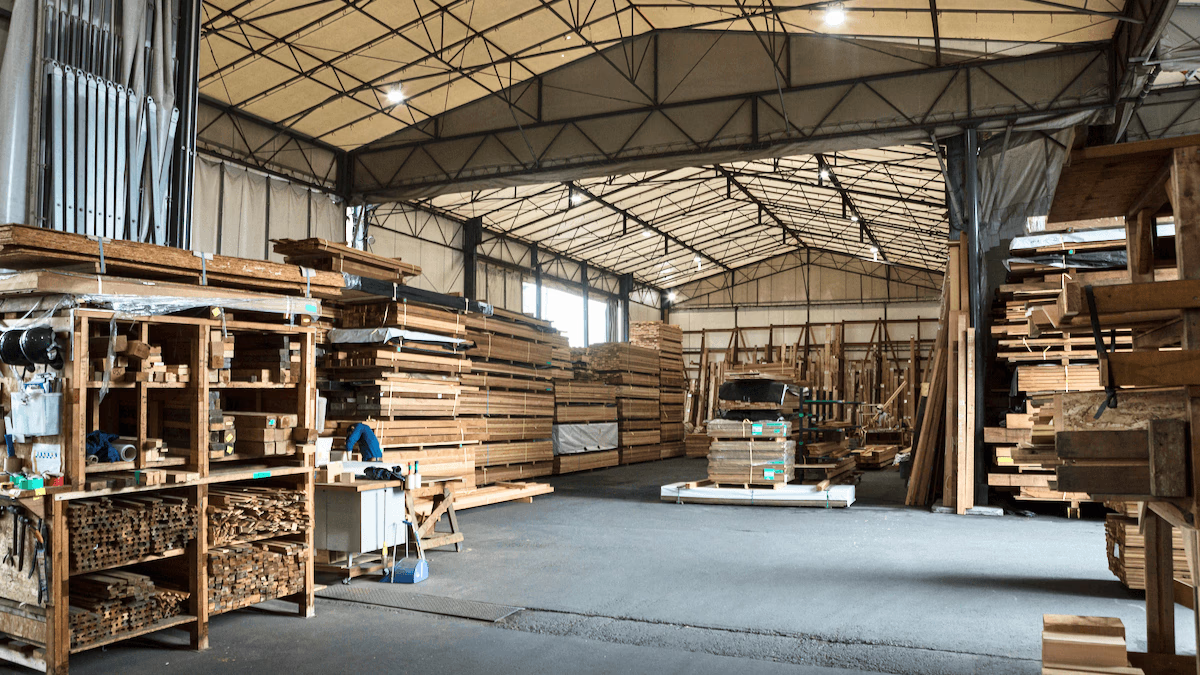自宅のデッキを施工した興奮は、そのまま僕と木材会社さんとの関係を変化させた。
Webサイトリニューアルのプロジェクトは進行中であったが、それと並行して未活用材の販売プロジェクトがはじまった。
しかし当初はモノサスが販売主体になるのではなく、あくまで木材会社さんの未活用材販売プロジェクトをコンサル的に支援する形だった。
ストックヤードツアーで感じた"限界”
未活用材の販売プロジェクトを支援するために、まずはじめたのは、ありったけの建築・デザイン関係の知り合いを木材会社さんのストックヤードに連れていくこと。彼らは、「友人だから」という理由で建材・木材の採用可否を検討するようなクリエイターではないからこそ、誘いやすかった。
よいものはよいと言うし、使えないものは使えないと率直に判断する人たちに、魅力たっぷりの未活用材を見てもらいたかったのだ。それだけの魅力がウエスタンレッドシダーの未活用材にはあると感じていたし、なによりも自分自身が惚れ込んでしまっているので、他人に勧めることにひとつも躊躇がない。
自分でも営業行為と思っていないから、木が好きそうな人に会うと気軽に声をかけ続けた。
実際にストックヤードを案内した友人・知人の建築家やデザイナーには喜んでもらえたし、感謝もされた。

実にいろんな方々がストックヤードツアーに訪れてくれている

東京木材埠頭の巨大なストックヤードを見学したことも
ストックヤードを訪れた建築家のうち何人かは、実際にプロジェクトで未活用材を採用してくれたし、大学で教鞭をとっている方は学生を伴って再訪してくれたりもした。
一方で限界を感じる部分もあった。
建築家やデザイナーの方たちが、面白く魅力的な形でウエスタンレッドシダーを実際のプロジェクトで活用してくれることで、建築雑誌などに作品が掲載され、広報的な果実は得られはじめてはいた。ウエスタンレッドシダーの広報にはなるのだが、未活用材であるということまではなかなか記載されない。
根本的に未活用材の販路を構築するという意味ではそれだけでは必ずしも充分ではないのだ。

2x2の短尺材をふんだんに使ったウッドデッキ。ストックヤードに大量に積まれていたデッドストック材が建築家のプロジェクトによって見事に活用された
未活用材販売ビジネスを自社でやりたい
そこで未活用材を販売するECサイトを構築しようという話になってゆくのだが、企画を立てはじめた段階で、すぐにコンサル的に関わることの限界を感じ始めた。
ECサイトとなると、ただ公開して終わりにできない。読み物コンテンツをどんどん追加していく必要があるだろうし、新しい商品の企画やキャンペーンなども継続的に展開していかなくてはならない。
それらすべてを提案し、Webに載せるコンテンツの制作もするとなると、木材会社さんへの請求が大きな金額になってしまうのは目に見えている。
もちろんそれに見合う金額を売り上げれば問題ないのだが、顕在化したマーケットでがないなかで立ち上げる未活用材を販売するECサイトがそんなにすぐにトントンと売上を上げてゆくものではない。
言ってみれば持ち込み企画であるにもかかわらず、コンサルはともかく制作で費用をいただくことに違和感しか感じなくなってしまった。
また、木材会社さん側の事情もある。木材会社さんとしては、海外から木材を調達し、それを適切に加工・保管・選別したり、最終的に施工現場に配送するための手配などの物流機能などに体制が最適化されている。もちろん広報機能や商品企画機能などは備わっているが、体制が手厚いわけではないので未活用材の販売まではとても手がまわらない。
このままコンサル的に関わっているだけでは、未活用材の販売プロジェクトそのものが動かないし、それを避けるためにコンテンツ制作やマーケティング機能全てをモノサスで引き受けてしまっては木材会社さん側のコスト負担が大きくなりすぎる……。
とまあ、こんな状況だったのだ。
この状況を理解してから、決断するまではそんなに時間はかからなかった。
「もうこれは自分で未活用材販売ビジネスをしちゃおう」
自分自身の木材への興味と、未活用材に可能性を感じた思いはもう止められないところまで来ていた。もうひとつ、今になって思う一番大きな動機は「こんな楽しそうなこと、他人にやられたくない」ということのように思う。
「林さん、どうせやりたいんでしょ」
そんなわけで自分の中では、もはや自社で未活用材販売ビジネスを立ち上げることしか考えられなくなってしまっていた。そうなると、まずは社内の役員会議でまわりくどい説明をせねばならない。
「え〜、こんな木材会社のお客さんがいるんだけど、未活用材というのがありまして……」
などとクドクドやっていたら、他のふたりの役員から、
「林さん、どうせやりたいんでしょ」
とひとこと。お見通しである(笑)。
「ただし、ちゃんと事業計画つくって投資回収計画出してくださいね」
「はい、わかりました……」
社内の合意(と言えるかどうか怪しいが)を取り付けた僕は、さっそく木材会社さんに、モノサスが販売主体となって未活用材販売ビジネスをやりたいというお願いをした。
そんな感じで僕の未活用材販売ビジネスが産声をあげることになったのである。
さていよいよ「木材屋さんになろう!」と決断したわけだが、最初に手をつけたのはECサイトをつくることではなかった(つづく)。


